As the first semester of the 2023-2024 school year draws to a close, the Jesuit LEGO club is beginning its biggest project yet. The club, seeking to offer a peaceful time during a busy school day, has accomplished many feats since its creation in 2021.
At the time of the club’s founding, it had less than 10 members and few supplies. Since then, the Jesuit LEGO club has recruited over 20 members who consistently attend the club as well as more who stop by periodically, it has fundraised money to supply large bins of bricks and sets, and has even completed projects that are now displayed in the school. Located in student affairs, the LEGO club displays a model of the Titanic.
The LEGO Titanic is the largest LEGO model by scale at 135cm long, and the second-largest set by piece count, coming in at a whopping 9,090 pieces. What’s quite extraordinary about a LEGO model of this size is that it’s not just the exterior parts that are included, but the interior sections too: grand staircases, boiler rooms, engine rooms, cabins, and even swimming pools are all built within the massive hull of the set, which is very uncommon for LEGO sets of this size. Additionally, the set is split into 3 sections with three separate manuals, so we could easily collaborate on the project by splitting it into three groups and attaching it together at the end.
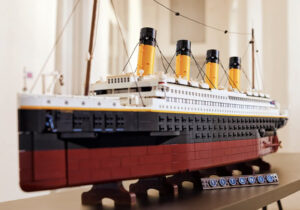
However, the LEGO club has moved on to an even more ambitious project. The club is seeking to build a model of the Jesuit cross, roughly two feet by three feet in size. The project will be a scale model of the cross, making use of navy, white, and gold bricks to accomplish the feat. As a result of the new undertaking, I have had the opportunity to interview one of the co-founders of the club, Hogan Civello in order to learn a brief description of the club’s goals, mission, and history.
Interview with Hogan Civello:
Q: Why, in your opinion, was the LEGO Club started?
A: “We started the LEGO club because we both love the hobby of building LEGO sets, collaborating, and displaying our creations. We noticed that there was an absence of a LEGO club at Jesuit, so we wanted to fill the need. We decided that we wanted to share our interests with everyone else at the school.
Q: What is the LEGO club’s mission?
A: “At the heart of our mission is the commitment to bring a calming atmosphere for students to hang out, and they can collaborate on LEGO projects if they want to, or focus on individual builds, or just come to relax for a few minutes. Through these collaborative times, we strive to provide a space where students can relax, tap into their creativity, and share in the simple fun of building. Our aim is to cultivate an environment that encourages a break from routine, offering a unique opportunity that few other clubs at Jesuit offer for students to unwind and find delight in the hobby that we share.”
Q: What does a day in the LEGO club look like? What activities do you do?
A: “Right now we are building a project, the Jesuit Shield, and we will often be building projects such as this. In other cases, we will have free build days, where we get out a large container of LEGO bricks and build whatever we want. In other cases, we will have competition days, where we compete to see who can build the best creation with a certain theme.”
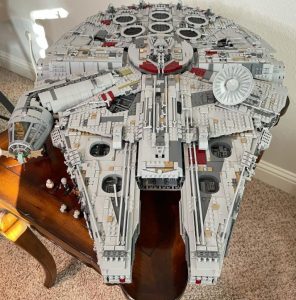
Q: What are your goals/aspirations for the LEGO club in the coming semester and onward?
A: “In the coming semester, we want to finish our LEGO shield. After we order more bricks, we should have the shield finished soon after we return from Christmas break. Additionally, we want to model some parts of the school to display. After that, we would like to expand the scope of LEGO club to beyond Jesuit.”
Q: What has been your favorite part of starting the LEGO club? What has been the greatest challenge?
A: “My favorite part of the LEGO club is the community that we have. We want to bring everybody together under a common interest, and anybody can come who wants to. One of the challenges was finding people to get the base club started and figuring out logistics such as when and where to meet.
Q: Do you have any advice for someone starting a club?
A: “If you have an idea, make it happen! There is always a group of people at the school that will share your similar interests and ideas. Then, talk to teachers around the school to see who would be the best fit to moderate your club. This teacher can be a teacher you have, or someone that you have never met before that could share the same interest as you. Then, you can talk to the administration to register the club formally, and then you can start recruiting members. The most important part is to just have fun. Clubs are meant to be fun, so that should be the main overall focus.”
Q: What is the most challenging LEGO set that you have ever completed? What was your favorite?
A: “My most challenging and favorite set are the same. My favorite set is the Ultimate Collector Series Millennium Falcon. The set is huge, and some of the parts were very complex and tedious. I think the set was close to 8,000 pieces, it has two rooms on the inside, and lots of minifigures from Star Wars that came with the set, including Han Solo, Princess Leia, Luke Skywalker, some Rebel pilots, and more. Also, the set is extremely heavy, so it was difficult to move around once it was built, but I love everything about the set. Overall, this set was amazing to build and looks amazing to display.

Q: How long have you been building LEGO?
A: “I have been building LEGO sets since I was very young. My favorite sets to build were the Star Wars sets, but I quickly got into lots of other types of sets as well. Gradually, as I got older, I moved to bigger and bigger sets, and my collection has been expanding for a long time. Although Star Wars sets are still my favorite, I have built sets of skyscrapers, a fire station, and some sets of real places, like the Chicago and New York skylines and the Eiffel Tower. Star Wars will always be my favorite, though. I have built multiple helmets of characters from the movie, as well as ships and other vehicles. I have a large collection of the minifigures, too.”
In the interview, Hogan commented on the LEGO club’s plans to expand its reach beyond just Jesuit. Through brainstorming, we have come up with some potential ideas of how to do so, while also staying true to Jesuit’s mission of being men for others. We believe that we can fuse Jesuit’s mission and drive to serve the community with the LEGO club to serve in our community through partnership with LEGO’s outreach program, the Local Community Engagement Program.

LEGO’s Local Community Engagement Program is a cornerstone of the company’s commitment to making a positive impact in the areas where it operates. This initiative is designed to foster meaningful connections and address the unique needs of local communities. At its core, the program emphasizes collaboration with local organizations, schools, and nonprofits to identify and support community-driven initiatives.
The Local Community Engagement Program’s motto is, “With the help of our passionate LEGO employees, we aim to leverage the transformational power of learning through play to inspire and develop children. Our local community engagement program currently operates in 31 countries, and we are working hard to expand it even further. The program relies on our employees in each country volunteering to help create projects to inspire children. These projects meet local needs, provide opportunities to local children, and leverage the skills and interests of local employees to have the greatest impact on the lives of children.”
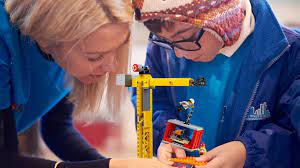
We believe that this motto encompasses our goals for our club perfectly. We want to partner with this organization to serve underprivileged schools in our community to bring them a fun and hands-on way to learn, just the same as the LEGO club provides at Jesuit. Additionally, LEGOs are known to be educational and extremely beneficial for children, as they provide the following skills, according to learningthroughplay.com:
Fine Motor Skills Development:
LEGO play is a powerful tool for honing fine motor skills in children. As they engage with the small bricks, children must use their fingers with precision to pick up, manipulate, and connect pieces. The process of aligning and connecting LEGO bricks fosters hand-eye coordination, requiring them to visually guide their movements. Additionally, the resistance involved in connecting LEGO pieces contributes to the development of finger strength, a crucial aspect for tasks like writing. The step-by-step nature of following instructions in LEGO sets further refines their sequential motor control, helping them coordinate movements in a systematic and controlled manner. These skills are applicable in the classroom, so the creation and use of LEGO clubs in nearby schools is not only beneficial for the students by providing them with a leisurely time in the middle of a stressful school day, but also benefits the school by growing their students in skills such as pencil control and handwriting.
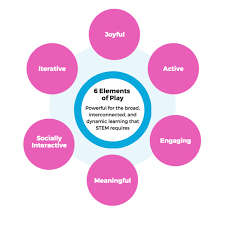
Problem-Solving and Critical Thinking:
LEGO sets, often accompanied by instructions, provide an avenue for children to exercise their problem-solving and critical-thinking skills. Following the step-by-step instructions necessitates sequential problem-solving as they analyze visual information, interpret components, and determine the correct order of assembly. When mistakes occur, as is natural in the building process, children engage in trial-and-error problem-solving. This approach instills resilience and encourages them to identify, backtrack, and correct errors. Spatial reasoning is also enhanced as they visualize and understand the spatial relationships between LEGO pieces. Moreover, the flexibility of LEGO play allows for creative problem-solving, prompting children to explore alternative approaches and adapt instructions to suit their vision.
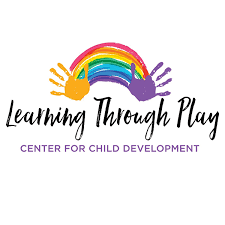
Creativity:
LEGO bricks are renowned for requiring creativity and imaginative thinking in children. Their open-ended nature allows for limitless possibilities during play. Children can take the same set of bricks and create many structures, vehicles, or scenes, fostering a sense of open-ended exploration. LEGO creations often become characters in stories, prompting children to incorporate storytelling into their play. This narrative aspect enhances language skills and stimulates the imagination. Beyond instructions, many children enjoy deviating from prescribed guidelines, encouraging them to think beyond the defined steps and explore unique ideas. Building with LEGO becomes a method through which children express their thoughts, ideas, and emotions in a tangible and visually appealing form, further nurturing their creativity.
Collaboration and Social Skills:
LEGO sets often come with numerous pieces, and building larger structures or completing intricate designs often requires collaboration, such as in our LEGO club at Jesuit. We have to discuss how to divide up work, negotiate who builds certain parts of the set, and also decide the final product of our build. There is often a compromise between club members about how to build a certain part of the set. Children learn to work together, share ideas, and distribute tasks. Collaborative projects encourage teamwork as they share and work on the same project. This cooperative atmosphere helps in the development of interpersonal skills, teaching children to communicate effectively and respectfully with their peers. LEGO play reinforces the importance of sharing and taking turns. In a group setting, resources such as specific LEGO pieces or building areas are shared among participants. Children learn to wait their turn patiently, share resources, and respect the contributions of their peers. These early experiences in sharing lay the groundwork for positive social interactions in various settings.
Conclusion:
Overall, the Jesuit LEGO club has gotten off to a great start, but we have ambitious plans for the future. With the groundwork completed, we hope to take on more challenging goals within and out of the Jesuit community. As always, the club is open to all. Come check out the club on Mondays during community time in room A212!






